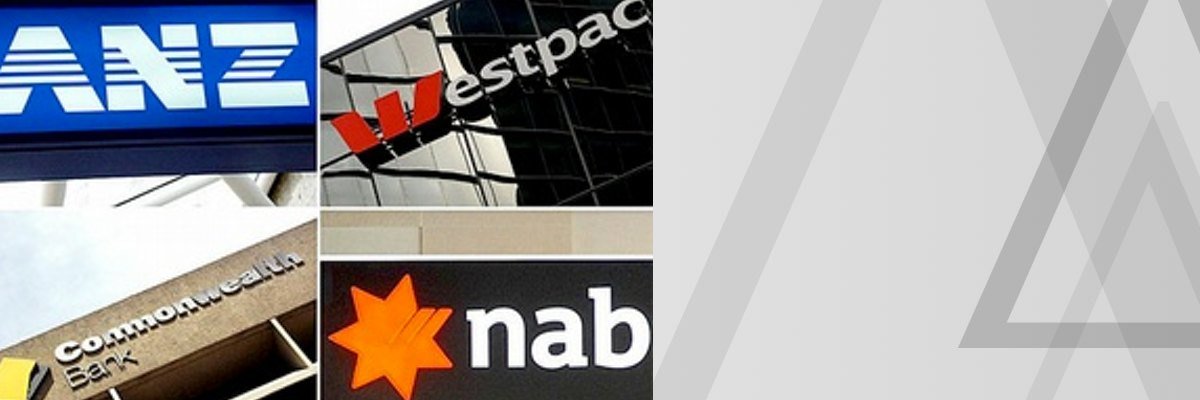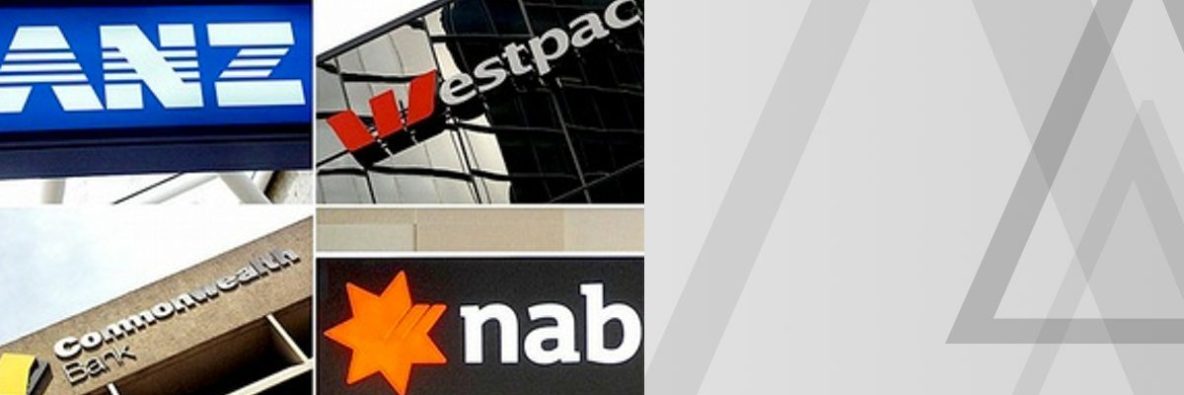
On Wednesday of next week, three of the four major banks will rule off their books for the year. Around four weeks later, they will announce results. And their dividends.
For the record, consensus dividend growth for the coming year from the 15 brokers covering the banks ranges from 0% (NAB) to a high of 2.14% (WBC), with CBA (1.44%) and ANZ (1%) in between. This is a slowdown on the growth over the past few years.
It will be a nervous period for bank CEO’s and investors. Nervous for CEO’s because they will have seen the large shortfall (A$1.5b) in retail shareholders from the $5.1b CBA rights issue at a time when the name of the game is raising the additional $14b capital required by APRA.
And nervous for investors, who probably haven’t digested the forecasts but may be wondering how dividends can be maintained on an expanding capital base in a faltering economy.
The last time all the four major banks cut dividends was 2009, post GFC. In CBA’s case, the final fell from $1.53 to $1.15, a drop of 24.8%. ANZ’s final dividend in the same year fell the same amount percentage wise, as did NAB’s, while WBC dropped 17%.
This is simple cyclical stuff, and not problematic – times get tough so earnings growth stalls or falls, and dividends with it.
But it isn’t just a cyclical story. It’s structural for two reasons – digital disintermediation is the first part. And just as important, it’s the way that APRA regulation is playing into that disintermediation.
The first part, disintermediation, has seen the growth in peer-to-peer lending because the internet makes it easy to match up the small scale borrower and lender.
Banks have been doing the Australian borrower/lender match-up through the card businesses of Visa and Mastercard, for which merchants pay the banks around $2b in fees annually. Indeed, there have been US lobbyists in Canberra in the past weeks attempting to prevent a reduction this fee stream.
Banks prefer cards because they are easier than the personal loan business, which they have more or less exited. Consumers and borrowers find this convenient, though they are paying merchant fees, and/or interest rates of more than 15% for the privilege.
In the US, this is advancing fairly quickly. Two players, Lending Club and On Deck Capital, listed in December, but there are many other unlisted players which are finding varying degrees of success, such as Prosper. In the UK, Zopa is the largest.
While these businesses are attacking banks on one front, players such as Apple, through Apple Pay, and Paypal have a different strategy, based not on lending but cheaper technological facilitation of the merchant/consumer business.
None of the new players – Paypal at one end and On Deck at the other – actually back the loans. They just match the buyer/seller books. And it’s here that the regulation story plays into disintermediation. The new players don’t operate under the same stringent APRA capital requirement regime because they don’t take deposits, so don’t need to guard depositors against systemic failure. They are therefore capital-light.
This isn’t just a buzz term. It means they require less money to compete, which in turn means that they can pick off the juicy parts of the banks’ businesses a segment at a time, without the big rights issues which are essentially there because the regulator wants to ensure that the banks can withstand a large enough shock in the form of bad loans to remain solvent. It’s insurance against bad practice, in effect, with the cost of the policy borne by borrowers, lenders and shareholders.
The point about the big capital calls required under the current, more conservative model is that they require additional earnings in order to be able to sustain the dividend growth which has been a hallmark of the banks. But the very nature of the additional capital is that it can’t be used to generate more earnings – it’s there to shore up the equity base on the existing loan book. The new earnings required to provide the dividend have to come from elsewhere – cost cutting, technology, productivity. Anywhere, really, just not more loans.
This is the problem for investors in banks. And it’s a continuing problem, because we have been told that the banks are only halfway through the $28b in additional capital that they require to be adequately capitalised in the new environment.
This existing bank model may or may not be the best in this new environment, but Lending Club has shown that there certainly are others. It virtually doubled its loan book (which now stands at around US$5b) every year, having extended over US$11.2b in loans in 10 years. The company has loan losses which amount to about 5% of loan volume. Investors, 30% of which are institutional, have been funding the loan book, and are booking returns of around 5%. It counts the US bank Wells Fargo as a shareholder, and has on its board former treasury secretary Larry Summers.
Globally, banks are heading into the eye of the storm, disintermediation-wise. So far, unlike the incumbents ten years ago, they are taking the threat very seriously, fielding whole teams to disrupt their own businesses.
In Australia the P2P business is less developed, but is still attracting interest, with Westpac taking it seriously enough to be an investor in Society One. Others, such as RateSetter, are also playing in the space.
It looks like the early days of the internet when the disintermediation hit retail, music and advertising, and more recently transport and hotels. Banking and finance survived the first round for a complex series of reasons, including cheaper access to capital, their own stronger networks and natural conservatism on the part of people where money was concerned. Ten years down the track, these issues are no longer so important – and they make the bank product a lot more expensive.
It’s worth noting that all three of the four are in the top twenty highest valued banks in the world, by market capitalisation. CBA, Westpac and ANZ are each worth more than Morgan Stanley. CBA and WBC are worth more than Goldman Sachs. There is a lot to play for.
Australia’s $7bn data centre | Harry Morrow features in SBS On the Money
18 Dec 2025Anshu Sharma features on EquityMates Best of the Best Podcast
18 Dec 2025December 2025 Update+
18 Dec 2025‘US Tech Volatility, AI Winners & Top Stock Picks’: Alex Pollak features on EquityMates Talk Money to Me
04 Dec 2025
Share this Post


